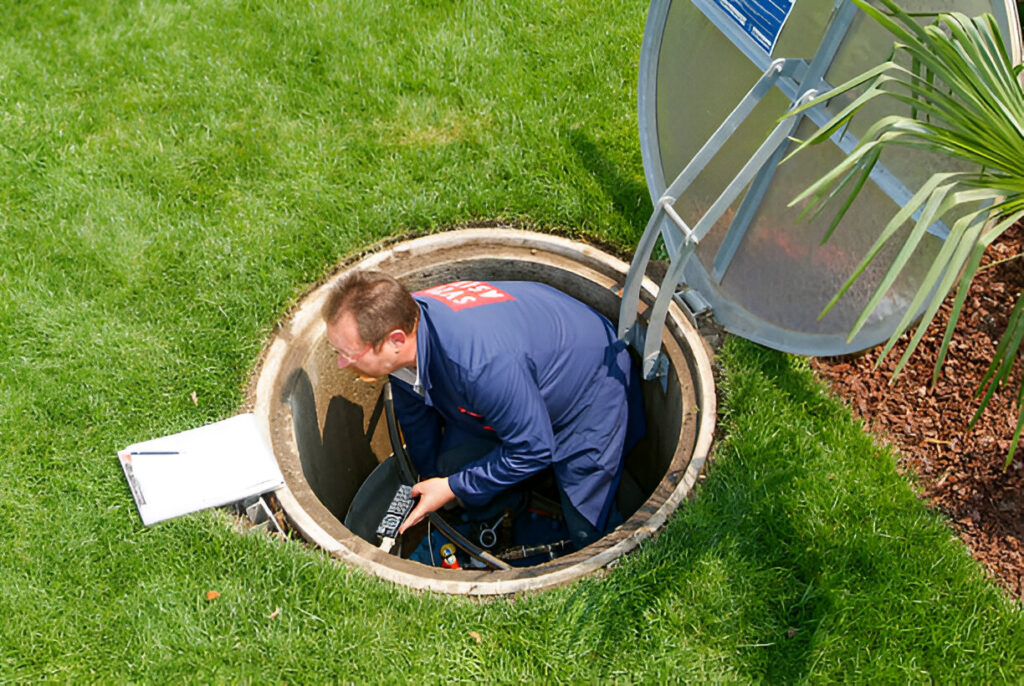What happens if a septic setup stops working properly? A failing unit can lead to unpleasant odors, slow drains, and costly repairs. Regular care keeps everything running smoothly. Let’s explore how to maintain a septic tank for long-lasting performance.
1. Understanding How a Septic Tank Works
A septic setup processes wastewater from household plumbing. It separates solids from liquids and allows bacteria to break down waste. Septic maintenance ensures the system functions efficiently and prevents major issues. Solids settle at the bottom, while lighter materials float to the top. If any part of the structure clogs, backups and overflows can occur. Proper care reduces the risk of costly failures. Regular pumping helps maintain balance within the unit.
Bacteria play a crucial role in breaking down waste. Harsh chemicals and antibacterial soaps can disrupt this process. Flushing non-biodegradable items may lead to blockages. A well-maintained wastewater setup can last for decades. Homeowners should be mindful of what goes down the drain. Conserving water prevents excess strain on the entire structure. Proper use and regular inspections keep everything in top condition.
2. Best Practices for Septic Tank Care
Routine care prevents breakdowns and costly repairs. Simple habits extend the life of wastewater disposal systems. Regular inspections help detect problems early.
Here are essential tips for maintaining the unit:
- Pump regularly to prevent sludge buildup
- Conserve water by fixing leaks and using efficient appliances
- Dispose of waste properly to avoid clogs and damage
- Use safe products to protect beneficial bacteria
- Keep heavy objects away from the drain field to prevent soil compaction
- Direct rainwater away from the system to prevent flooding
- Schedule professional inspections to catch issues early
- Avoid planting deep-rooted trees near the structure to prevent pipe damage
Following these steps keeps the setup working efficiently. Preventative care reduces the chances of unexpected failures.
3. Common Septic Tank Problems and How to Prevent Them
Septic structures can develop problems over time. Slow drains and gurgling sounds may indicate trouble. A full reservoir can cause sewage backups in sinks or toilets. Strong odors around the yard may signal a leak or overflow. Wet patches near the drain field suggest improper filtration.
Prevention is key to avoiding costly repairs. Regular pumping prevents solids from clogging pipes. Using water efficiently reduces strain on wastewater treatment setups. Tree roots can break underground lines and block drainage. Keeping the surrounding area clear helps prevent future damage. Monitoring household habits supports long-term functionality.
4. The Role of Professional Service
Expert care ensures everything stays in optimal condition. Licensed professionals perform thorough inspections. They check for leaks, sludge buildup, and drainage problems. Septic tanks should be pumped every three to five years.
Hiring professionals offers many benefits. They have specialized tools to detect hidden issues. Certified technicians can recommend maintenance plans. They provide advice on improving efficiency. An experienced team helps extend the life of wastewater management units.
5. Knowing When to Pump the Tank
Regular pumping prevents major problems. The frequency depends on household size and water usage. A full reservoir can lead to slow drainage and backups. Waiting too long can cause damage to underground pipes and the drain field.
Warning signs indicate when pumping is needed. If toilets flush slowly, the setup may be overloaded. Strong odors suggest waste buildup. Wet spots near the system signal an overflow. Keeping a maintenance schedule helps prevent these issues.
Taking care of a septic setup prevents costly repairs. Routine inspections and proper use keep everything working efficiently. Septic maintenance professionals help ensure long-term reliability. Regular pumping and mindful habits protect the system from failure. With the right approach, wastewater treatment units can last for decades.


